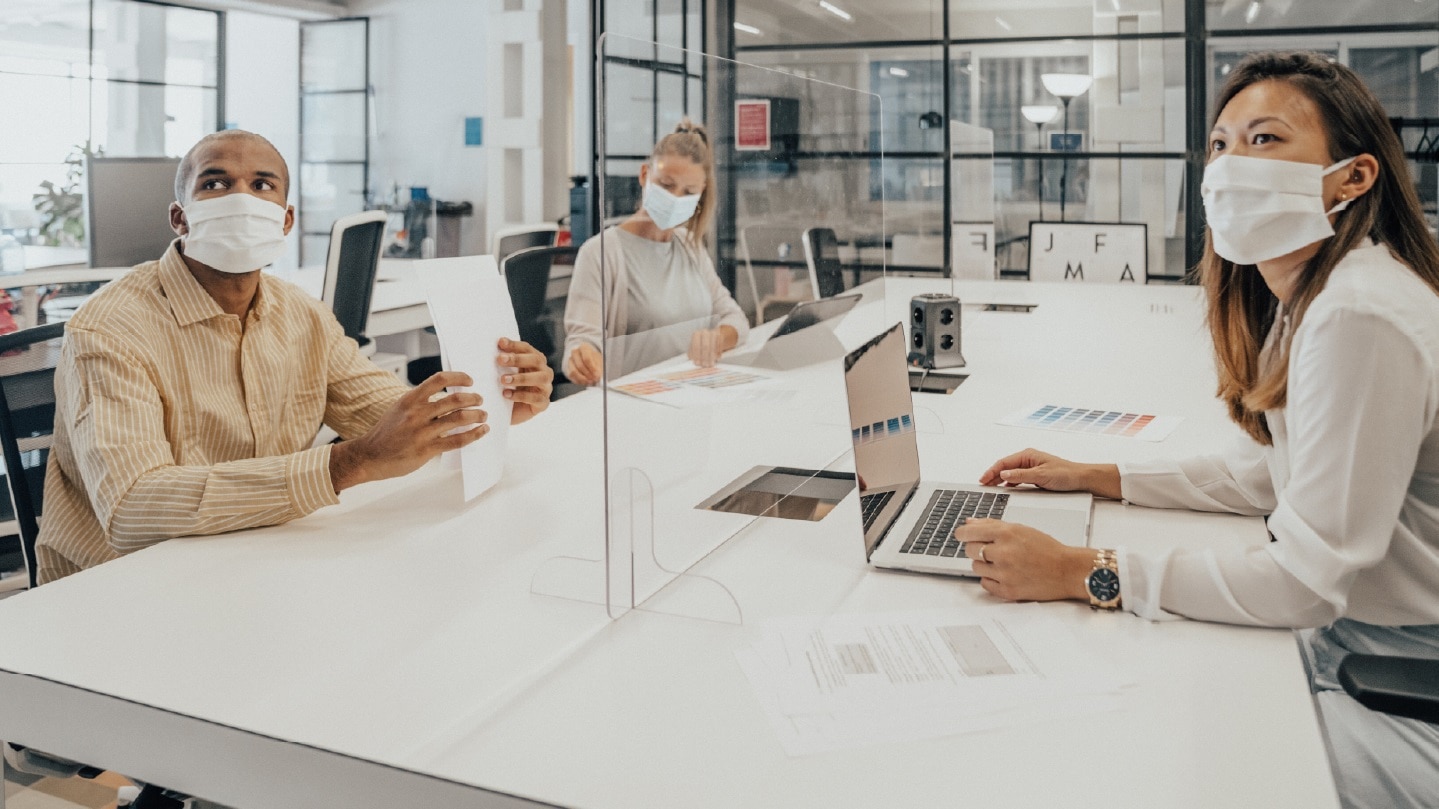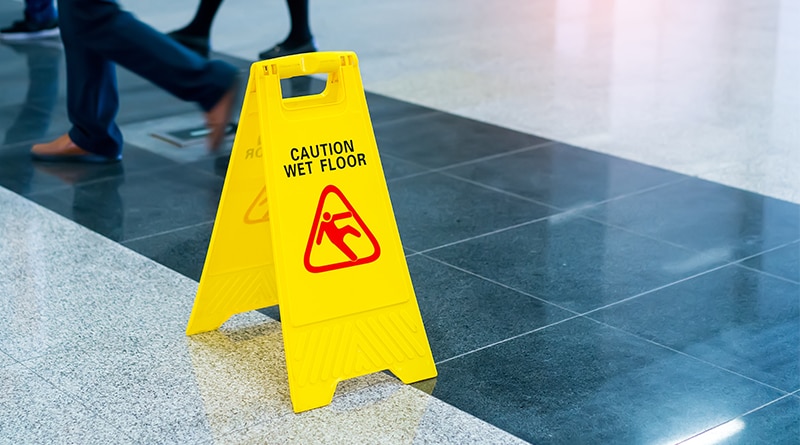
During the COVID-19 pandemic, businesses in every sector have faced unprecedented challenges and risks. Almost overnight, companies had to move employees online, alter products, offer new services, implement extensive safety protocols, and come to terms with the possibility of a complete shutdown. This pivot to the “new normal” dramatically altered risk profiles and insurance needs.
Now, with vaccine rollouts underway and many states lifting health restrictions, businesses are feeling optimistic about a future free from the pandemic. But even with herd immunity, we won’t go back to a pre-COVID world.
Now over a year into the pandemic, COVID-19 has sparked a lasting shift in how we do business. The pandemic transformed our business landscape in terms of the way we work and how we evaluate risk. In this article, we are diving into three risk trends to keep in mind as we transition into post-COVID economic recovery.
3 trends in the post-COVID risk landscape
M&A activity sparks financial market volatility
Just after the pandemic started, mergers and acquisitions (M&A) experienced a decline as companies shifted their focus to keeping operations going. According to White & Case, an international law firm, the final quarter of 2019 saw a 77% increase in M&A deals, for a total of more than $540 billion. And “the valuations of these M&As are going up dramatically,” says David Perez, chief underwriting officer of Global Risk Solutions at Liberty Mutual Insurance.
The use of special purpose acquisition companies (SPACs) has also changed the M&A landscape, with a trend toward businesses relying on these companies instead of private equity firms. As public corporations listed on the stock exchange, SPACs sole function are to acquire private companies. When a SPAC acquires a company, it avoids the need for a traditional IPO.
The final quarter of 2019 saw a 77% increase in M&A deals, for a total of more than $540 billion.
What does this mean for the market? According to Perez, SPACs have made the market significantly more volatile. “We’ve seen swings of 1,000 points from month to month,” he says, “and that heightens D&O risk.”
“From an insurance perspective, you’re underwriting the company raising the capital, but you don’t always know what company they’ll actually acquire. That leaves a wide range of potential risks to contend with,” says Perez.
Many businesses rely on M&A to grow – and this isn’t a bad thing. But if your business’s growth strategy includes plans for a merger or acquisition, especially by a SPAC, you need to look closely at risk and ensure you have adequate coverage. In hardening insurance markets, like the market for directors and officers (D&O) coverage, collaborating with underwriters is essential to help protect your company during these periods of transition.
A deconditioned and/or untrained workforce drives safety risks
In 2020 and 2021, millions of Americans decided to retire early – often due to the struggle to adapt to remote work, or unexpected job loss. Similarly, McKinsey & Company recently reported that COVID-19 may force up to 25% of U.S. workers to change occupations. This means that as employers recover financially and look to build up their staff in the coming years, they may be looking at a less-skilled or untrained pool of applicants – and that introduces more risk.
“In any job with a high safety risk, like construction, trucking, or manufacturing, untrained workers present tremendous exposure for accidents to occur. A spike in incident frequency and/or severity is probably our biggest concern as economies reopen,” says Perez.
COVID may force up to 25% of U.S. workers to change occupations. So as employers recover financially and look to build up their staff in the coming years, they may be looking at a less-skilled or untrained pool of applicants — and that introduces more risk.
In labor-intensive industries like manufacturing or construction, there’s also a new risk of injury because of deconditioning. Working from home – or not working at all – for more than a year has left many workers with less endurance, flexibility, and strength, according to EHS Today. And those physical changes equate to greater risk of injury on the job.
To address the increased risk of injury from untrained or deconditioned employees, Perez recommends investing in training. “The number one best practice is making sure you have procedures and protocols in place to get your workers trained up appropriately,” he notes. “The more hazardous the occupation, the more time you should allow for the hiring and training process to occur.”
Heightened social responsibility for corporations
A year of dealing with the pandemic didn’t just shift how businesses think about health and safety. Social unrest also shifted how they think about diversity, equity, and inclusion. Committing to environmental and social governance (ESG) is more important than ever – but it also introduces more risk, as consumers demand higher levels of accountability and corporate responsibility.
“Environmental and social governance (ESG) is something that investors are concerned with as well as customers,” says Perez. “Financial institutions are increasingly required to disclose their corporate social responsibility efforts and falling short will be treated much more harshly both in the court of public opinion and in the actual jury box.” Bottom line? Ignorance is no longer an excuse for businesses engaging in unethical or unjust practices
Meeting ESG guidelines can be labor-intensive, as both insurers and insured parties take a closer look at their investment portfolios, vendors, suppliers, and partners. “The insurance industry is going to become a bigger leader, overall, in terms of helping customers manage the transition while recognizing that the importance of ESG in not only the investment side of the house, but also the underwriting side of the house,” says Perez. “Making sure that we’re committed as an industry to ESG is going to be more important every day, every year, going forward.”
Evaluating risk in an uncertain world
While COVID-19 has brought turbulence to the marketplace, there is one certainty: when the pandemic finally subsides, it won’t be a return to “business as usual.” Not only has work culture permanently changed because of the pandemic, but the ongoing hard markets will add additional difficulties for many companies. Companies looking to reduce their risk should work with an insurance provider to help them understand their specific risks in a volatile financial landscape and offer resources and coverage to fit those needs.
For Perez, addressing those challenges is an ongoing priority. At Liberty Mutual, “We continually push education out to the marketplace, providing updates on exposures, risk control measures and legislative changes. We want all of our customers to be informed,” he says.
The future may be uncertain but taking a proactive approach to risk management can help you stay ahead of the curve and avoid rate changes in a fluctuating insurance market. “In general, there’s still a lot of correction that needs to be worked out in the marketplace,” says Perez. “Our goal is always to help clients navigate uncertainty as smoothly as possible by bringing our knowledge and underwriting expertise to bear.”
Do you want to learn more about the top risk trends impacting the business landscape in 2021? Read our series on risk and the post-COVID economy.
Related insights
This website is general in nature, and is provided as a courtesy to you. Information is accurate to the best of Liberty Mutual’s knowledge, but companies and individuals should not rely on it to prevent and mitigate all risks as an explanation of coverage or benefits under an insurance policy. Consult your professional advisor regarding your particular facts and circumstance. By citing external authorities or linking to other websites, Liberty Mutual is not endorsing them.



